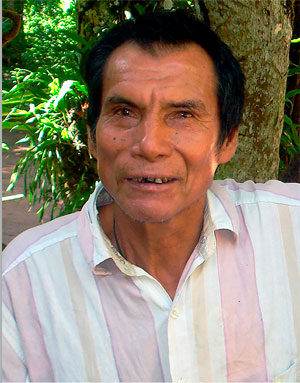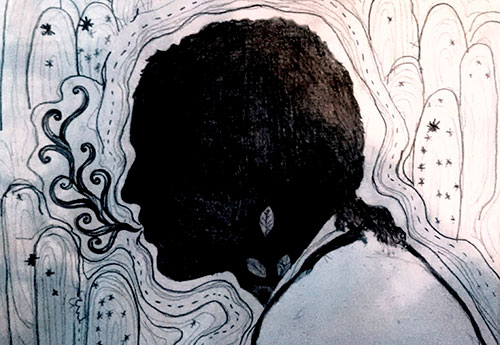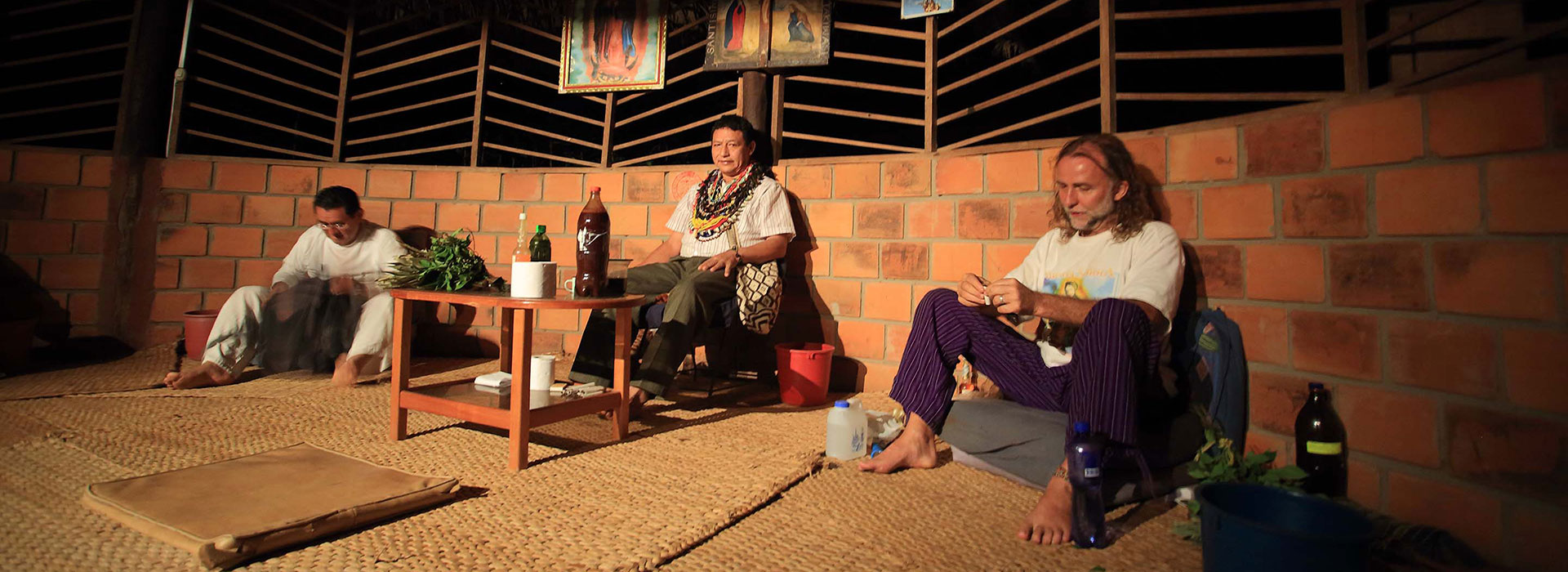The prophecies of the Andean world announced for our time the appearance of man-bridges called chakarunas, people with a vocation to establish connection between different "worlds": material versus spiritual world, different cultural worlds, phenomenological world versus archetypal world (numen), etc. In a context of planetary globalization where borders tend to blur, it is surprising to note that universality reaches the most remote parts of our humanity, including the healing and spiritual arts spaces of remote ethnic groups. The Peruvian Amazon is one of these spaces that are opening up to the explorations of Westerners who lately come to invade Amazonian cities and villages in the summertime in waves of “spiritual tourists”, creating the phenomenon that has been called “shamanic tourism”. In them we find the several motivations, from physical healing to the search for mystical experience, from curiosity about exoticism to adding one more psychedelic experience to their drug intake list.
The man-bridges come from opposite sides, from the western world as well as the indigenous world: the bridge can be crossed in both directions. In this peculiar book we have a perfect example of this new dynamic. Don Alejandro expresses himself through his healing arts, his songs or ikaros, his therapeutic practices, opening his doors to non-indigenous people. Ana María Pérez expresses herself through her skills as a social communicator who knows how to translate the former’s experience in Western-style writing and is capable of listening with respect to the ancient voices of the indigenous world. Don Alejandro is an illiterate with regard to rational, linear, categorizing language where Ana María is an expert. In turn, she is at the school of Don Alejandro's expertise in the metaphorical, analogical, transrational language that he inherited from his ancestors. She organizes a trip to Italy and he guides her on a journey to the invisible world.
Where does the encounter between these two people, who symbolizes a repair for the failed meeting between Europeans and Indigenous people of five centuries ago, take place? In the middle of the bridge. And the first image of this bridge seems to me to be that of the heart, the place where two human beings can, not only tolerate their differences, but also appreciate and even love them. The heart located between the instinctual forces of the "belly" and the rational powers of the "head".
In this transcultural space, archetypes common to all humanity can emerge, expressing those fixed elements that constitute the wealth of the human race. Beyond the cultural coloration of their expression, the symbols (sinbolein: throw together, gather the senses) represent the universal language. The symbolic figuration expresses valid truths from the most physical level to the most spiritual one. The sun is at the same time the star that illuminates and gives heat, as well as the manifestation of the spiritual Light that illuminates the human mind and spirit, and warms the heart. It allows us to orient ourselves (from the East where it is born) in this material reality as God guides us in the dimension of the invisible world. Without the guiding star, our life becomes a possible mess, a confused chaos.
The symbolic coherence of the bridge is manifested in multiple ways and in all instances of life. It is not by chance if the anatomy designates the limbic bridge as the brain structure that joins both hemispheres of the brain. The right hemisphere assumes the so-called "melodic" functions of intuition, emotion, globalizing perception of the environment. Don Alejandro, due to his culture and his training as a master healer, has developed these functions in a peculiar way. Ana María Pérez, due to her culture and her academic training, especially exercised the left hemisphere, which is the bearer of the so-called “epicritical” functions, those of reasoning, of systematization, of linear logic. And both hemispheres must collaborate in a coherent way so that the human being can effectively exercise the basic functions of memory (mnesis), knowledge (gnosis) and adequate action with reality (praxis). In this challenging age for the survival of humanity, a challenge that affects both indigenous peoples and Western society, both parts of humanity, with their respective treasures and abilities, are obliged to unite, know each other, educate each other. The meeting of Don Alejandro and Ana María prefigure this indispensable and necessary companionship, a condition for the salvation of humanity, which must go as far as the recognition of an authentic brotherhood.

Is it by pure chance that this corpus callosum or limbic bridge is essential to determine the "mood" of a subject, his state of mind? This anatomical formation is located at the base of the brain or old brain, also called paleo-brain or archeo-brain. It is also called the reptilian brain because it assumes the most primitive survival functions that correspond to the reptilian state on the evolutionary scale. Is it also a mere coincidence that the spirit of Ayahuasca is visualized as a snake even by people totally unaware of the Amazonian environment and ignorant of its cosmogony? The pineal gland that produces substances such as DMT (dimethyl-tryptamine) is located in this same brain area, which generates visionary effects and whose secretion is exacerbated in survival situations (strong emotional shocks, near-death experiences, mystical states, etc.). Is it a coincidence that one of the essential components of the Ayahuasca concoction is precisely the DMT? So many coincidences? In fact, it matches perfectly.
As scientific knowledge advances, it can be verified what the Amazonian master healers have been affirming for centuries and even millennia (there is three-thousand-year-old evidence of Ayahuasca intake in the Amazon). When I studied medicine in the seventies, we were told that the pineal gland was useless, that it was only an archaeological vestige of evolution... We have just learned of the very sophisticated pharmacology of the active principles of Ayahuasca where triptamine alkaloids are combined with other β-carbolines to produce visionary and purgative effects. This knowledge of a high scientific degree was evidenced through the subjectivity of the right hemisphere of Don Alejandro's ancestors. β-carbolines act as inhibitors of a digestive enzyme (MAO: monoamine oxidase): contemporary psychiatry started to use this type of substances (MAOI) as antidepressants only a few decades ago, confirming the psychotherapeutic indications of Ayahuasca provided by traditional indigenous practitioners. The natural presence of the active principles (and similar) of the Ayahuasca component in body fluids was recently demonstrated, to such an extent that it has been called "endo-ayahuasca". Therefore, the intake of Ayahuasca reproduces natural physiological mechanisms, exacerbating them, and does not represent any aggression to the human organism by substances foreign to its metabolism.
Within the healing practice, the door is opened between both worlds, that of the concrete and directly perceptible manifestation of ordinary reality, and the usually invisible world that requires access to modified states of ordinary consciousness to be perceived. The master ayahuasquero once again exercises his “pontifical” function (as a bridge) between both worlds by putting them into ritual form. The ritual establishes a system of containment and symbolic integration of the experiences lived under the effects of Ayahuasca. It is a true "technology of the sacred", an extremely rigorous liturgy that assures the participants the safe entrance into this "other world" as designated by certain anthropologists, and more than all the safe return from this exploration to "this world".
In his desperate search for answers to his existential restlessness, the Western individual immersed in a desacralized society, has taken the risk of finding himself the way to this other dimension. By profaning the sacred plants of various cultures, according to his consumerist and immediate scheme, he dared to enter this archetypal world (numinous according to Jung's proposal) without a guide, without protection, without signs to help his return. He forgot the lessons of Little Thumbling who knew how to mark the way back home. By exonerating himself from the ritual rules, he transgressed the universal laws. He undertook an erratic and reckless search similar to the flight of Icarus, wanting to appropriate the truth, wisdom, knowledge, without learning the way, without clear intention. And he got lost. Without containment, he exploded. Without integration of what was experienced, he got disintegrated. He confused the enlargement of consciousness with the inflation of the ego. Coca got distorted into cocaine and basic paste or crack; opium has been transformed into heroin; tobacco and cannabis (marijuana) are directly smoked, thus skipping the long stage of ritual ingestion in solid or liquid form indicated by the traditions... Those sacred medicines whose use was distorted then became the poison that we know today. Conversely, alcohol, the "spirit" within Western rituality, became the deadly drug of the indigenous world that was burned with this aguardiente (burning water).
It is appropriate here to recall some elementary truths on this subject:
 - Addiction as a massive phenomenon is typically Western and, before the arrival of Europeans to the New World, it was unknown among the native peoples of the Americas despite their millennial use of psychoactive plants or animal substances;
- Addiction as a massive phenomenon is typically Western and, before the arrival of Europeans to the New World, it was unknown among the native peoples of the Americas despite their millennial use of psychoactive plants or animal substances;
- Sacred plants contain visionary substances misnamed hallucinogens since they do not offer false perceptions of reality but rather symbolic visualizations (as in dreams) that describe psycho-affective problems and need to be deciphered;
- Substances in their visionary use never produce addiction or dependence (for example, tobacco juice is visionary and no addiction to it is reported);
- The phenomenon of addiction condenses all the contradictions of the Western world and therefore the drug addict is only the visible expression of the pathology of an entire society, its prototype: a way of curing drug addicts would then indicate a possible way of healing the current pathologies of all Western society.
The approach to the sacred implies a symbolization that gives coherence and security to this undertaking. Its opposite is mindless consumption (literally "foolish"), where body, mind and spirit are dissociated. In front of the "symbol" (sin-bolein) stands the "devil" (diabolein: separation, dissociation of the senses). The dimension of the "shadow" surrounds all exploration of the invisible world, from the darkness of the personal or collective unconscious, to the manifestation of diabolical entities or demons universally detected by all traditions, including the Western one.
This also opens our eyes about an idealization of the indigenous person that tries to compensate many times for the Western guilt complex and responds to the myth of the “good savage”. Don Alejandro gets a distance from the neo-shamanic currents where inexperienced indigenous or non-indigenous healers improvise, call themselves "teachers", and, surfing on the waves of the "New Age", try to locate themselves in the lucrative spiritual market or they fascinate themselves by the mirages of their pseudo-power.
For all these reasons, Ayahuasca, when used properly, can be an adequate response to addiction problems. Don Alejandro visited us at the Takiwasi Center, in Tarapoto (Peru), where we are gradually trying to develop a therapeutic protocol for drug addicts. He belongs to the "college" of master healers who transmitted their wisdom to our doctors and psychologists, passed along their experience in the proper management of states of consciousness for self-knowledge and healing. Faced with the Western fascination for "visions" he reminds us that above all it is about purification, that Ayahuasca does not go without a complex of other plants and purgative techniques.
Echoed by Christian mystics like Saint John of the Cross, he reminds us that the way to enlightenment (illuminative way) is preceded by the purgative way. In his rituals, Don Alejandro summons the healing forces of plants and other forces of nature (the "little doctors" as he calls them), but without ever ceasing to constantly invoke the Eternal Father as the supreme and governing entity of his humble intervention.
Beyond the solidarity and empathy between indigenous people, mestizos, westerners and any human being living under the sun, in order to be authentic and not remain only in beautiful words, the brotherhood indicated by the man-bridge requires to recognize oneself as children of the same Father, accept our affiliation to the same Creator.
We then thank Don Alejandro and Ana María Pérez for giving us a lesson on genuine brotherhood and helping to mark with a white stone the path of return to the common home of the human race.
Originally published in Spanish. Prologue to the second edition of the book “Naturaleza Silvestre. Ceremonias de un chamán amazónico” by Ana María Pérez (2008). English translation: Fabio Friso.
